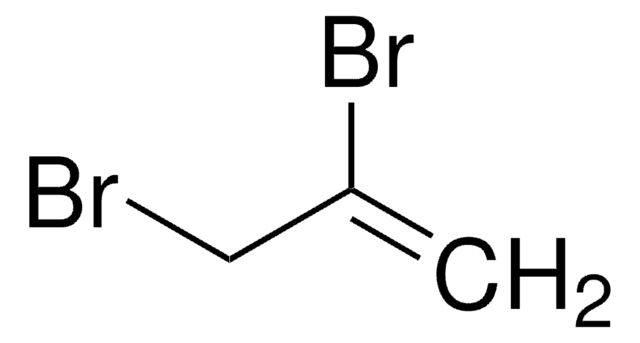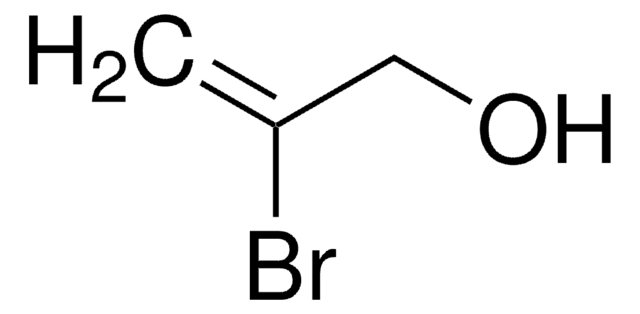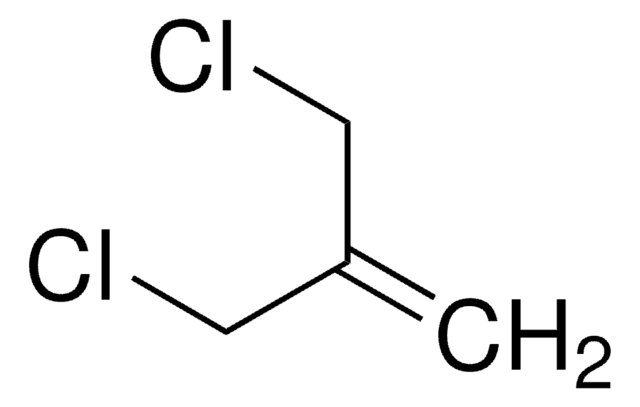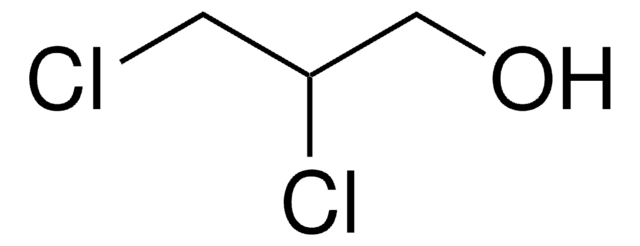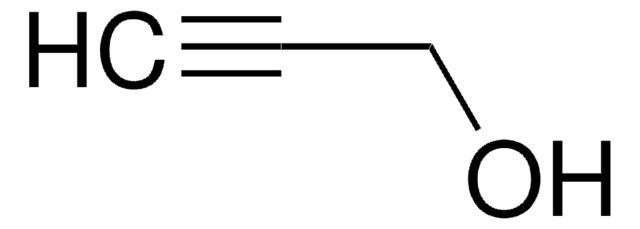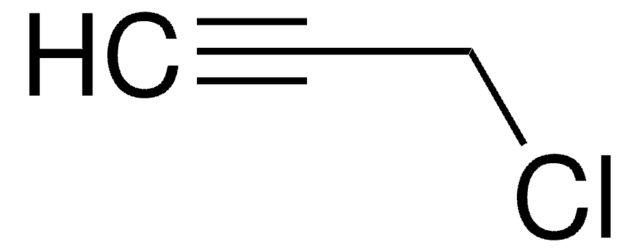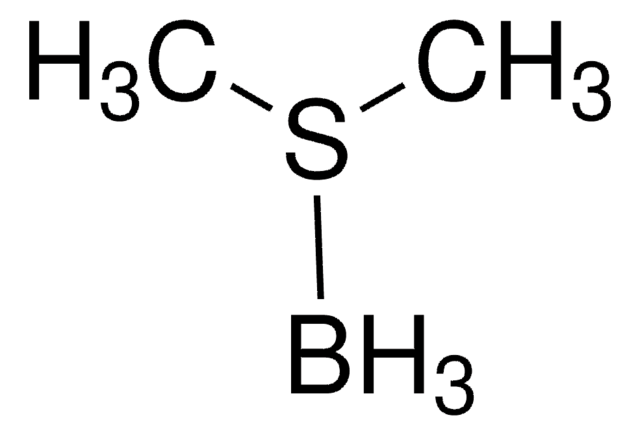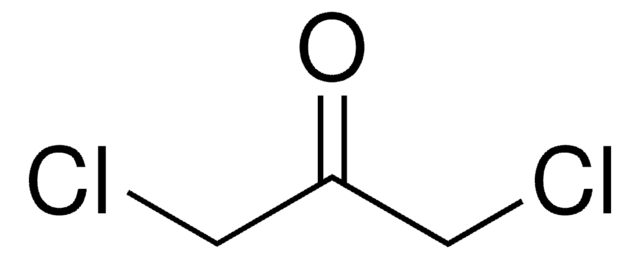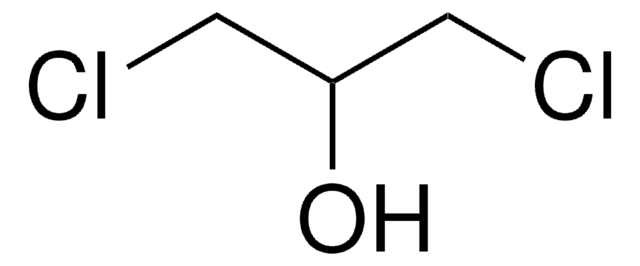Kluczowe dokumenty
D72603
2,3-Dichloro-1-propene
98%
Synonim(y):
2,3-Dichloro-1-propene, 2,3-Dichloropropene, 2,3-Dichloropropylene, 2-Chloroallyl chloride
About This Item
Polecane produkty
gęstość pary
3.8 (vs air)
Poziom jakości
ciśnienie pary
44 mmHg ( 20 °C)
Próba
98%
Postać
liquid
granice wybuchowości
7.8 %
współczynnik refrakcji
n20/D 1.461 (lit.)
tw
94 °C (lit.)
gęstość
1.204 g/mL at 25 °C (lit.)
ciąg SMILES
ClCC(Cl)=C
InChI
1S/C3H4Cl2/c1-3(5)2-4/h1-2H2
Klucz InChI
FALCMQXTWHPRIH-UHFFFAOYSA-N
Szukasz podobnych produktów? Odwiedź Przewodnik dotyczący porównywania produktów
Powiązane kategorie
Hasło ostrzegawcze
Danger
Zwroty wskazujące rodzaj zagrożenia
Zwroty wskazujące środki ostrożności
Klasyfikacja zagrożeń
Acute Tox. 4 Dermal - Acute Tox. 4 Inhalation - Acute Tox. 4 Oral - Aquatic Chronic 3 - Eye Dam. 1 - Flam. Liq. 2 - Muta. 2 - Skin Irrit. 2 - STOT SE 3
Organy docelowe
Respiratory system
Kod klasy składowania
3 - Flammable liquids
Klasa zagrożenia wodnego (WGK)
WGK 3
Temperatura zapłonu (°F)
50.0 °F - closed cup
Temperatura zapłonu (°C)
10 °C - closed cup
Środki ochrony indywidualnej
Eyeshields, Faceshields, Gloves, type ABEK (EN14387) respirator filter
Wybierz jedną z najnowszych wersji:
Masz już ten produkt?
Dokumenty związane z niedawno zakupionymi produktami zostały zamieszczone w Bibliotece dokumentów.
Klienci oglądali również te produkty
Nasz zespół naukowców ma doświadczenie we wszystkich obszarach badań, w tym w naukach przyrodniczych, materiałoznawstwie, syntezie chemicznej, chromatografii, analityce i wielu innych dziedzinach.
Skontaktuj się z zespołem ds. pomocy technicznej